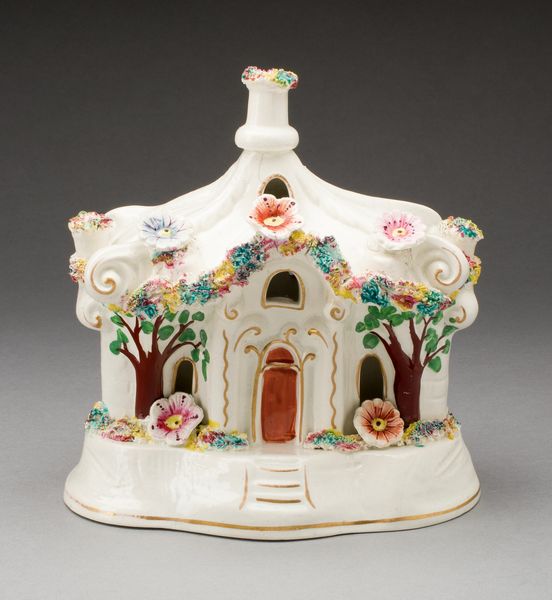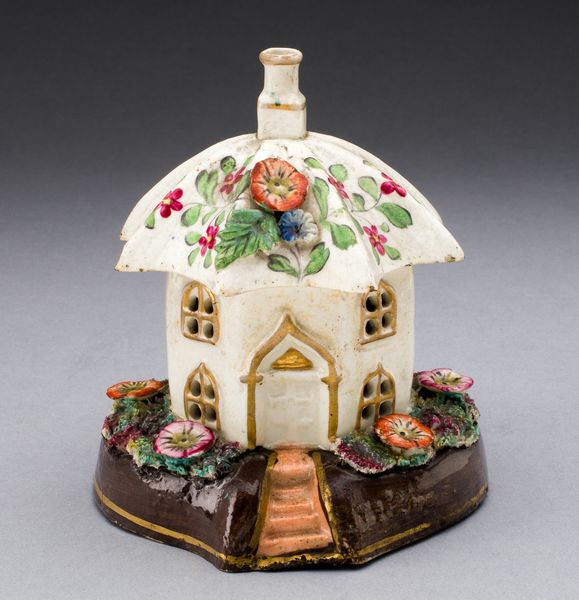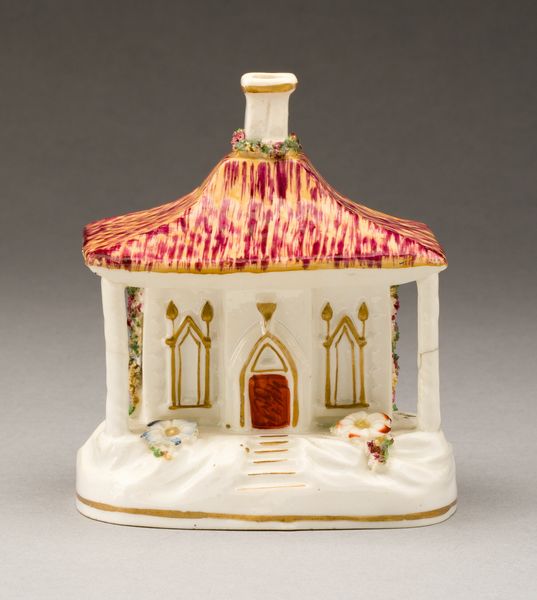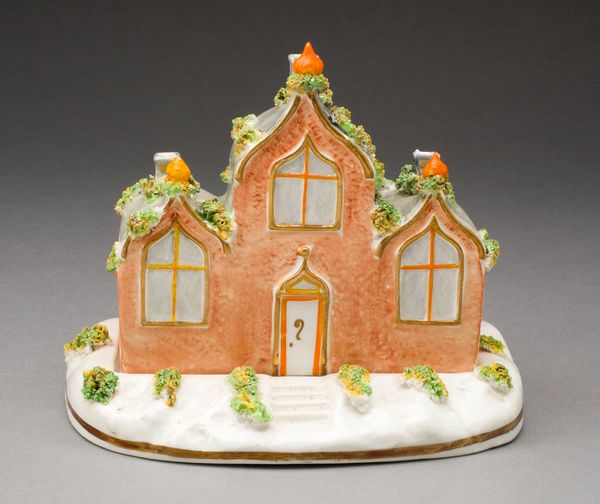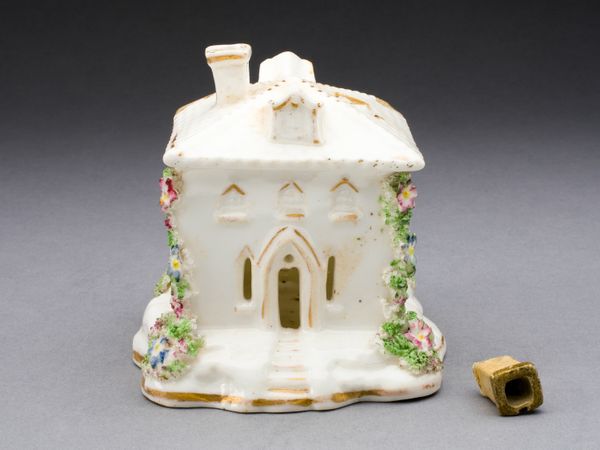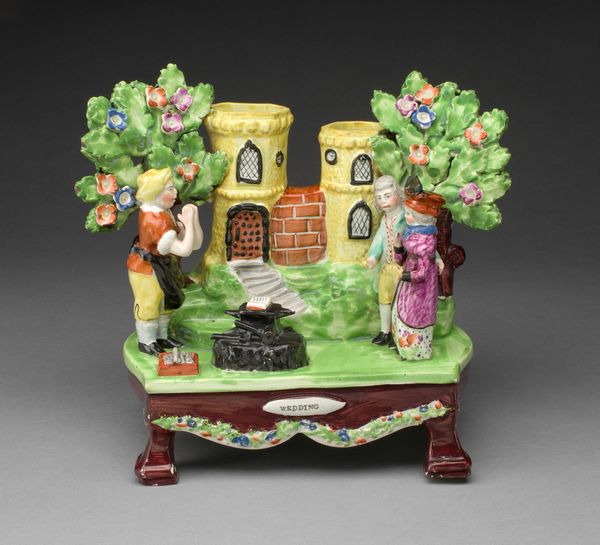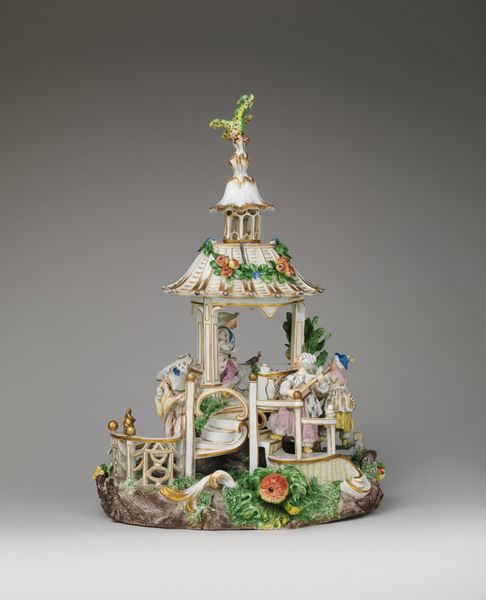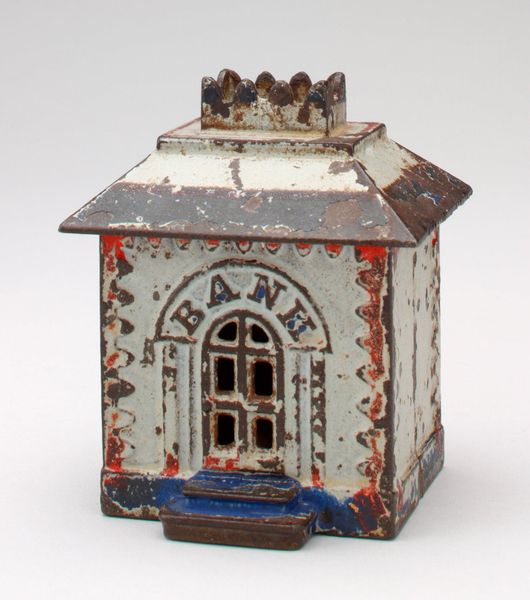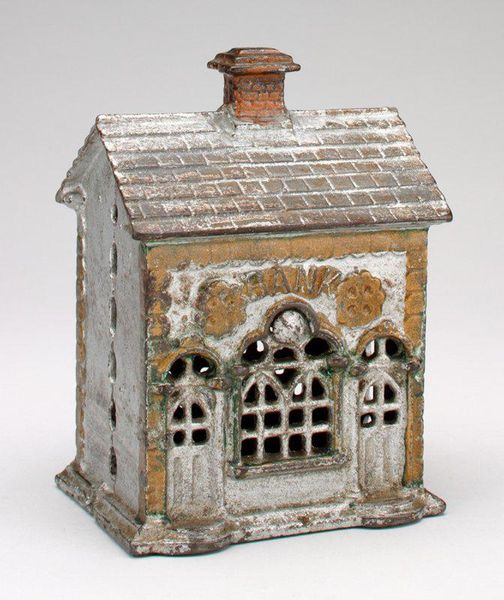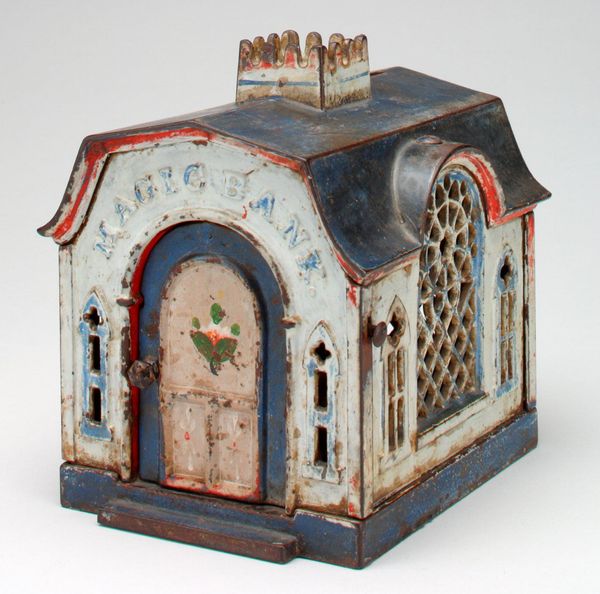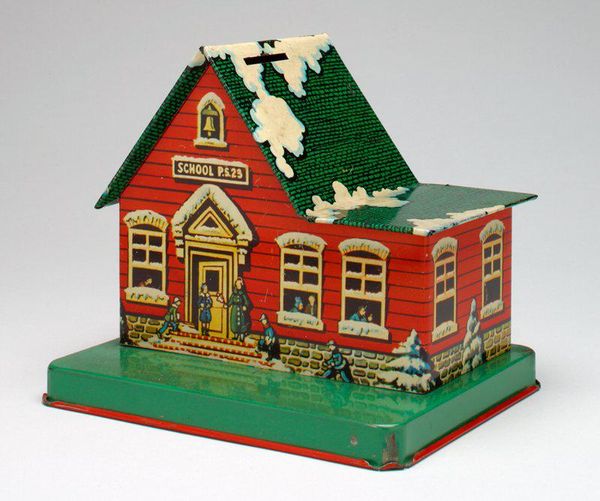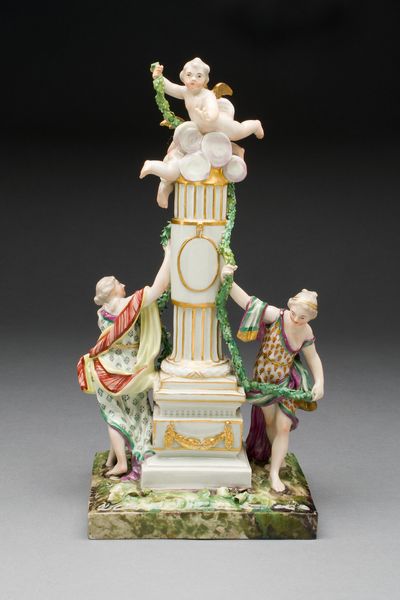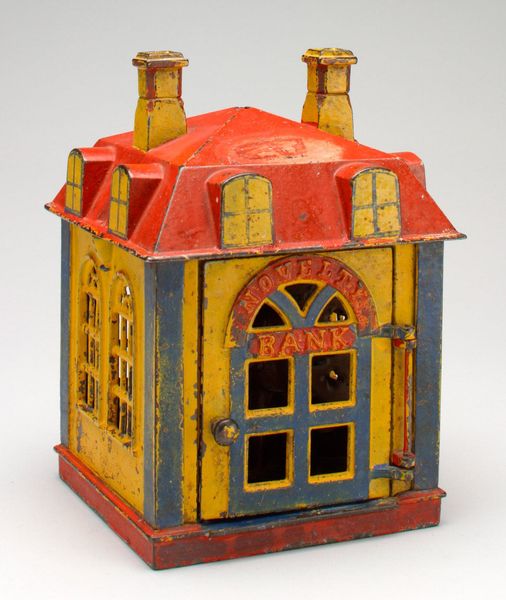
ceramic, earthenware
#
ceramic
#
earthenware
#
ceramic
#
genre-painting
#
decorative-art
Dimensions: H. 12.1 cm (4 3/4 in.)
Copyright: Public Domain
Editor: Here we have an earthenware ceramic incense burner, crafted around 1830 by the Staffordshire Potteries. It depicts a quaint house, almost like a fairytale cottage. What draws my eye is how much detail they were able to achieve through earthenware. What do you see when you look at this object? Curator: Well, focusing on its materiality, this object raises questions about production. Staffordshire, at the time, was a hotbed of ceramic manufacturing. Were these pieces made by individual artisans or factory workers, or by dividing labor in workshops? That changes the perception, wouldn’t you agree? Editor: Definitely! So, the labor behind even decorative pieces like this adds layers of complexity? The piece is charming, so considering factory production does add a critical lens. But why depict a house? Was there something especially symbolic about it? Curator: Consider the cottage's cultural context. Early 19th-century England was experiencing shifts in land ownership and urbanization. Portraying an idyllic home may express a longing for a pre-industrial lifestyle or become something of a commodity itself for city-dwellers looking to maintain some semblance of country life within urban interiors. Editor: So it is also a statement on how consumerism and the notion of "home" were beginning to change due to labor division during the Industrial Revolution? Curator: Precisely. Even something as seemingly simple as an incense burner opens a window into those evolving societal relationships and the means of production behind these everyday objects. Editor: That makes you consider what "home" actually means. I never considered it through the lens of labour division and class! I learned a lot! Curator: Indeed. By exploring the materials and context, we uncover deeper meanings and broader social narratives embedded within art.
Comments
No comments
Be the first to comment and join the conversation on the ultimate creative platform.
